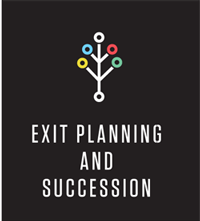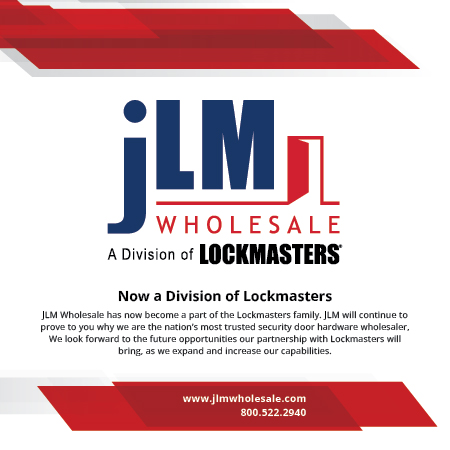Exit Planning and Succession III - A Continuing Story
Don Friese plans for a lasting legacy for C.R. Laurence Co.

 The story of C.R. Laurence Co. is one of growth and acquisitions, of innovation and solutions. It is a story of people, strong leaders and dedicated employees who worked to grow the company into a respected glass and glazing industry giant with a worldwide presence. It is a story of brand, and of products that have shaped the glass business over many decades, creating opportunities for companies across the industry.
The story of C.R. Laurence Co. is one of growth and acquisitions, of innovation and solutions. It is a story of people, strong leaders and dedicated employees who worked to grow the company into a respected glass and glazing industry giant with a worldwide presence. It is a story of brand, and of products that have shaped the glass business over many decades, creating opportunities for companies across the industry.
When Don Friese, the long-time sole owner and CEO of the company, began to plan for his eventual exit from the business, he had one goal in mind: to find a way to allow that same CRL story to continue into the future.
The exit plan
Friese has been a leading force at C.R. Laurence Co. for 55 years, spending the last 18 years as sole owner and CEO. He helped the company grow from a $20,000-a-month business when he joined in 1961 to a multinational firm with more than $500 million in annual sales.
Five years ago at the age of 70, Friese began to plan for the future. He set out to build an exit and succession plan with CRL’s top management that included CRL President Lloyd Talbert, Chief Financial Officer Arty Feles, and Executive Vice President D.J. Friese, Don Friese’s son.
“When Don turned 70, he came to the management team and said, ‘I’ve got 10 good years left in me. We’ve got to start thinking about what happens when I’m not here.’ It was a valid concern,” Talbert says. “We understand the management of the business, how to operate the business. However, the ownership is a completely different issue.”
At the time, the business was set up so ownership would pass from Friese to his wife Andrea. “Don has been very upfront about his succession plan for the business, and his wife was on board,” Talbert says. “However, she is the same age as Don. What happens when she is not around?”
The management team discussed the various exit and succession planning options for the business. “What if we set up an independent board? What if we put the shares in trust? We looked at so many different options,” Talbert says. “Over the five years, the conversation came up over and over again. It was a situation where we didn’t know what we wanted, but it was obvious what we didn’t want.”
After exploring various options, the team began to focus on the potential sale of the company with a buyer that would allow the business to continue to run as it has done successfully for many decades. “We wanted to be left alone,” Talbert says. “We looked at models where the entrepreneur stays on to run the business.”
Four years into the research stage, the conversations turned more serious. The team retained the expertise of Lloyd Greif, president and CEO of Greif & Co., a Los Angeles-based investment bank, and laid out three distinct plans: Plan A, sell to a private equity firm; Plan B, sell to a strategic buyer; Plan C, do nothing.
“We always had Plan C,” Talbert says. “We knew we had a pretty good thing here. We like working together. And, maybe doing nothing is the final outcome. Up until the end, that was our mindset.” That freedom allowed the management team to be discerning, and to make decisions based on their post-acquisition vision for the company.
When Oldcastle BuildingEnvelope expressed interest in being CRL’s strategic buyer, the management team realized they had found the acquisition partner they were seeking—one that would allow the company to continue to operate independently, under the same leadership. “Looking at their portfolio, we saw a buy-and-hold strategy,” Talbert says. “We saw family businesses, entrepreneurial businesses that were purchased and left in place. This is part of their DNA, and our story made a lot of sense to them.”
In the end, Oldcastle BuildingEnvelope purchased the Los Angeles-based glazing product, system and machinery supplier in a $1.3 billion deal announced on Aug. 27, 2015.
The people
The deal made good, long-term business sense for the company. However, CRL management was left with the critical task of demonstrating to its 1,600 employees that it also made good sense for them—that the acquisition would not only allow them to continue with the company, but that it would also provide them with longer term security with the company.
“In my 25 years with this company, I have done in excess of 20 acquisitions. I have been there, standing in front of a group of people I don’t know, watching the old owner telling employees that they’ve sold the company, and ‘this is your new boss,’” Talbert says. “You can see the mood drop; you can see everybody’s shoulders slump.”
Now that they were on the reverse side of that conversation, Talbert and the rest of the CRL management team strived to provide a different experience for their employees. “We wanted to set their minds at ease and assure them that everything was going to be the same,” Talbert says. “We did this for the company and for the employees.”
“We communicated that we will be a standalone company,” Friese adds. “I’m going to be in charge, the management team stays in place. Everybody has jobs, and everybody is going to be doing what they’ve been doing.”
It was also important for Friese to recognize the work of every employee. After the acquisition, he distributed $80 million in bonuses among CRL employees who had worked for the company for at least a year.
“The people part—that’s the whole game. The way our people interact with the customers. By far, the most important part of CRL’s success is the people. It’s not the buildings, not the inventory. It’s the people inside those facilities,” Friese says. “We have done quite a few acquisitions. With every acquisition, it wasn’t to get inventory—it was always to get people. People are what make your business a success. I could buy all the warehouses in the world, all the inventory in the world, and it won’t make me a success.”
Looking ahead
For the CRL management team, the work of the last five years to build a successful exit and succession plan was dedicated to ensuring the company’s future. A big part of this future involves continuing the company’s track record of innovation and product development. These efforts not only help grow the company, but also the industry, Friese says.
“This was the basis of the company from back in the early 60s. How do we make the industry better,” Friese says. “We are part of this community and are constantly working to develop the systems, develop the products to help solve whatever problems or issues come up.”
Key to this process is an investment in research and development. This investment will be greatly expanded post-acquisition.
“We will have a joint commitment to business development and R&D in a way that has never been done before,” Friese says. “We will continue to be the innovators, the one who has the new idea, the new solution. … We’re combining the resources of two companies. I don’t see anything but the aluminum industry, the glass industry, becoming better because two companies came together.”
“Our efforts are directed to keeping the industry growing, to keeping glass relevant,” adds Talbert. “Our goal is not to get a bigger slice of the piece of the existing industry. Our goal is to grow the industry and to allow our customers to be successful.”
A Legacy of Growth at C.R. Laurence
Don Friese doesn’t like to talk about “vision.” When he completed his military service and moved to California in 1961, he wasn’t looking to lead a company; to influence an industry. He didn’t envision a future in which he would become a leading entrepreneur in the glass business, eventually selling his company for more than $1 billion.
“I came to California with another soldier with $125 in my pocket. We didn’t find work right away, and that $125 was going pretty quickly. When I joined CRL, I didn’t have a ‘vision,’ I just wanted a job,” Friese says.
When he joined C.R. Laurence—then a six-person business doing about $20,000 of business a month—the owner was actually seeking a buyer for the firm. “To a young man, as I was in those days, I was always surprised that we had people come through to look at the business, but never come back. That was an eye opener. What was wrong with the company? I learned a lot during that time,” Friese says.
A nephew of the owner, Bernie Harris, bought the company, and worked closely with Friese to grow the business. Friese took on leadership roles at the company and eventually became the sole owner in 1997. “He bought a small business with six people and made it better. He created an opportunity for somebody to look at it and see what it could be,” Friese says. “He was one of the best things that ever happened to us.”
During the early years at the company, Friese began to recognize not only the potential for CRL, but also the incredible growth potential of the glass industry. “In everything I see in life, I see glass. I see glass in my home. I see glass in my automobile. I see glass in construction projects. I was amazed in general at the feeling, the potential of the glass industry in the whole economy in the early 60s,” Friese says. “Seeing that, I made the decision to stay with glass. It is never going to go out of business.”
In the more than 55 years since Friese joined the business, it has grown from a six-person firm to now an international business with 42 locations around the world and 1,600 employees.
“The most important thing is our employees. The biggest problem when I first started was that I was doing it by myself. People came in, and they wanted to work with me. You can never be a bigger company if you’re just one person,” Friese says. “Key to this company being successful, to reaching a billion dollars, is having enough people—people who have intelligence, loyalty, respect all wrapped into one. We hire the people; we train the people; we retain the people.”



